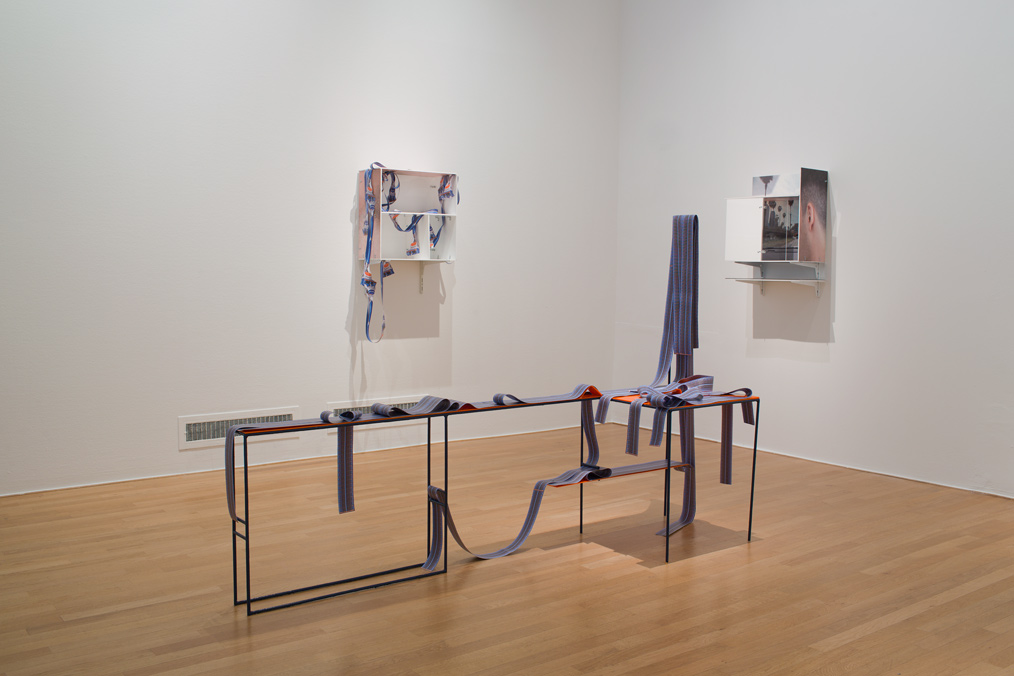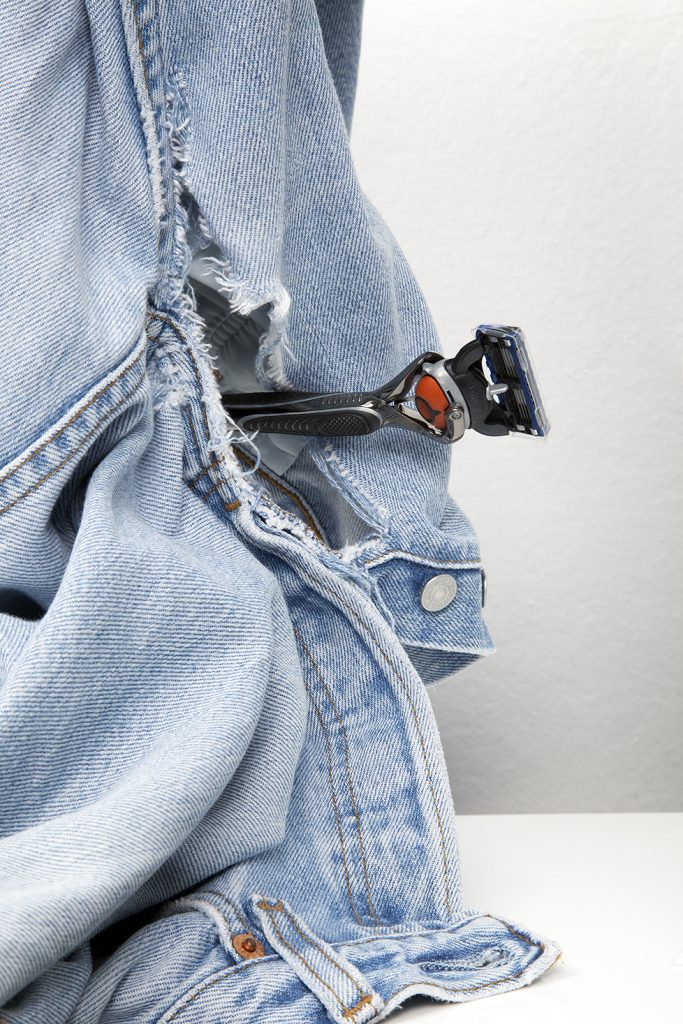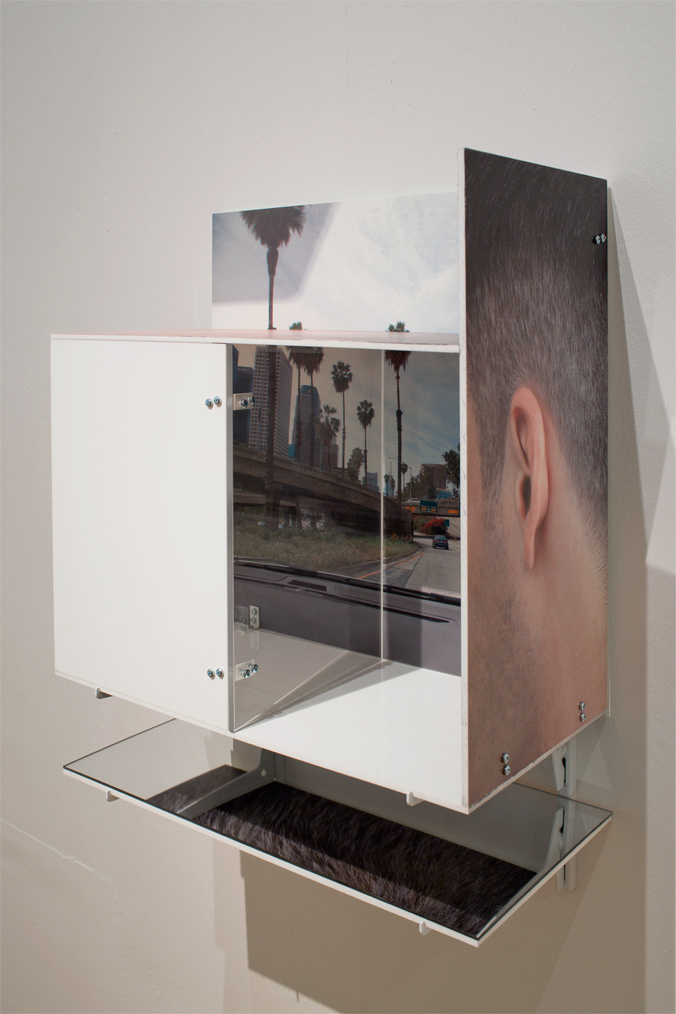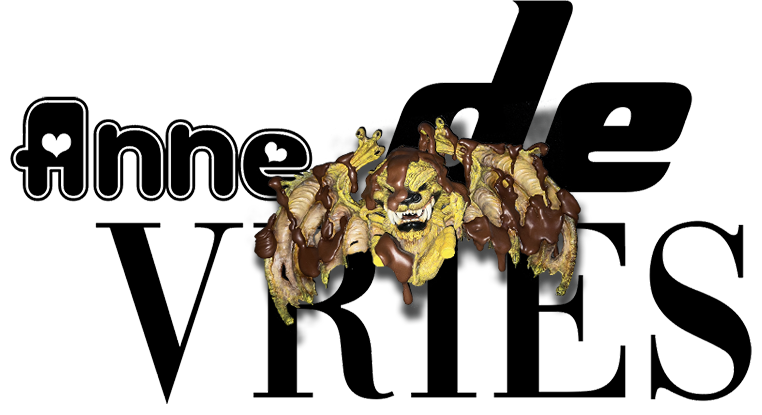

















Title: GILLETTE’S, IDEAL CITY PROPOSAL
Artist: Anne de Vries
Year: 2014
Dimensions: Various
Materials: Double-sided UV prints on Photo Forex, PVC, mirror, coated metal hanging system, screws, Gillette razors, clothing.
Conceptual Background:
This body of work draws inspiration from The Dream of King Camp Gillette and his radical proposal for a future urban society. Before becoming known for inventing the safety razor and establishing a major industrial enterprise, King Camp Gillette (1855–1932) authored several books and pamphlets outlining his vision for a transformed economic and social system.
In his first major tract, The Human Drift, Gillette proposed the creation of a single, highly organized, technologically advanced megacity called “Metropolis.” Designed to house the entire population—excluding agricultural and rural labor—this urban complex would be constructed using cutting-edge materials and systems. Gillette envisioned this society as being administered by “The United Company,” a unified organization responsible for producing, manufacturing, and distributing all necessities of life.
Although often grouped with utopian literature such as Edward Bellamy’s Looking Backward, Gillette’s proposal reads not just as speculative fiction, but as a sincere (if eccentric) urban and social engineering plan. As both an inventor and idealist, Gillette’s “Metropolis” functions as a kind of verbal prototype—an industrial-era working model of a unified and optimized future city.
Artistic Approach:
Through precision photographs of Gillette’s shaving products, used as the basis for sculptural forms and visual layering, this work explores the intersections of utopian architecture and the refined industrial design of Gillette’s iconic shaving systems.



